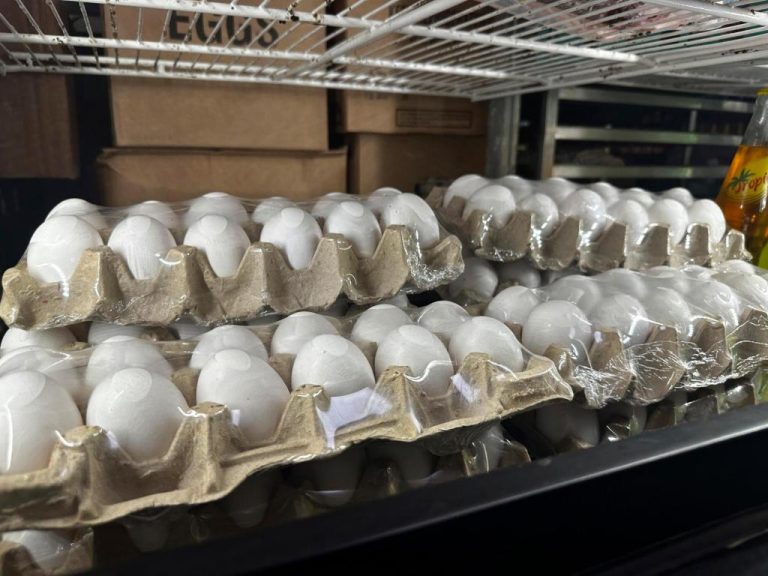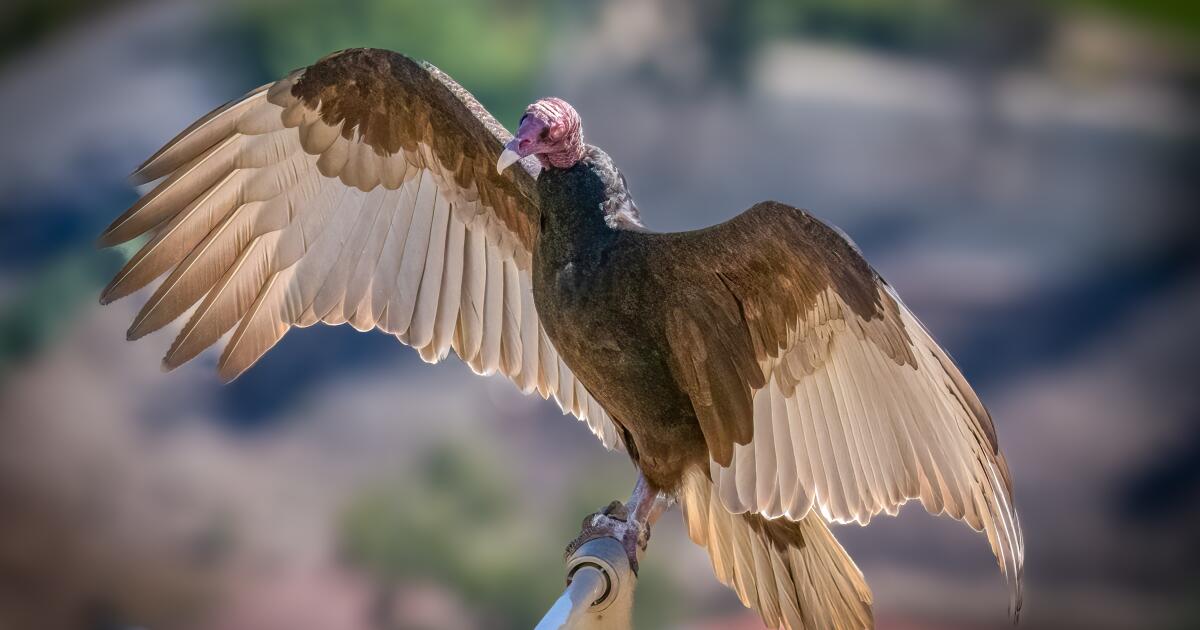
Morning is often about watching wildlife here on Mt. Hoo.
It’s more unusual when the wildlife is watching me.
Looking out the kitchen window while waiting for coffee to brew, there was a huge turkey vulture sitting on the hawk perch I’ve installed at the edge of the hill that slopes off into the native vegetation.
He was glaring ominously at me, with massive wings extended and drooping like a mourning drape.
For a mature person, this can be a bit disturbing, especially before the coffee has kicked in.
You see, turkey vultures are often associated with death and transformation, but also knowledge, wisdom and resourcefulness.
I’m going with the latter.
In the Cherokee culture, the turkey vulture is known as the Peace Eagle, because it kills nothing in order to live.
It is known as Sha’ii in the local Kumeyaay language and is viewed as a spirit animal by many Native American cultures.
This display of spread wings by my visitor was not unusual or sinister. He was simply taking advantage of the early morning sunlight after a chilly night and allowing his dark feathers to absorb the warmth.
Maybe this was his version of morning coffee.
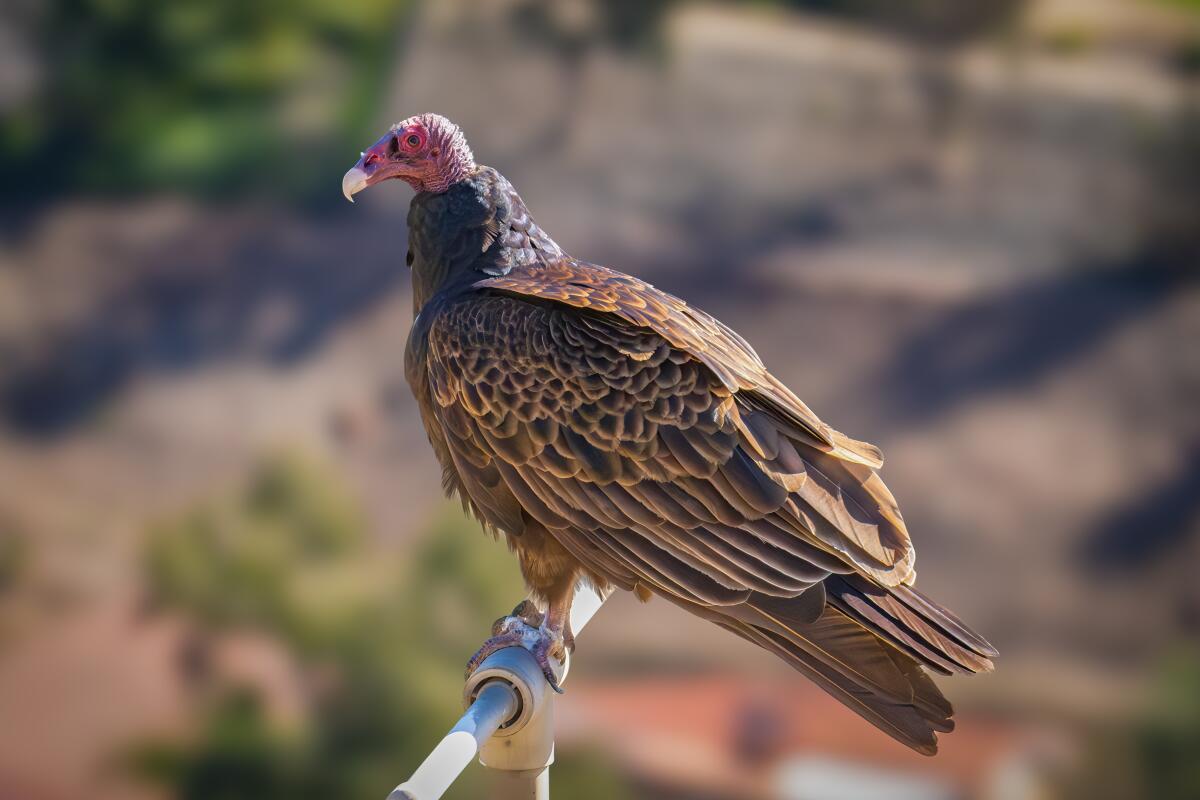
Vultures are nature’s waste disposal team, feeding on and removing the remains of animals that have died.
(Ernie Cowan / For The San Diego Union-Tribune)
These are big birds, and I must admit, my close-up view also allowed me to see the beauty of this specialized animal.
Seeing a vulture on the wing at a hundred yards is one thing, but face-to-face at about 30 feet is something else.
With a body length of nearly 3 feet and a wingspan of about 6 feet, the 3-pound turkey vulture is the fourth-largest bird species in North America, being slightly larger than the osprey, but smaller than other raptors such as golden and bald eagles and its gigantic cousin, the California condor.
Females are typically slightly larger than male turkey vultures, but coloration is the same in adult birds.
And here it was, this massive bird, a Mt. Hoo visitor up close and posing for photos.
I keep a camera handy for such situations, and during the next few minutes was able to record many images of this large, feathered visitor.
Typically, we see vultures peacefully soaring above open areas without a wing beat.
In flight, these massive birds are poetry in motion.
They ride the air currents and seem to float effortlessly, with simply a tilt of the tail feathers to change direction.
From a distance they appear black or dark brown, but seeing my visitor at this close range revealed an intricate and delicate pattern of layered chestnut brown feathers, edged with a lighter, buffy tan color.
The head is a stark contrast to the heavily feathered body.
Like the ruffle collars of Elizabethan England, the feathers of the turkey vulture end sharply at the neck, exposing a bald, red head and white beak.
There’s a reason for this.
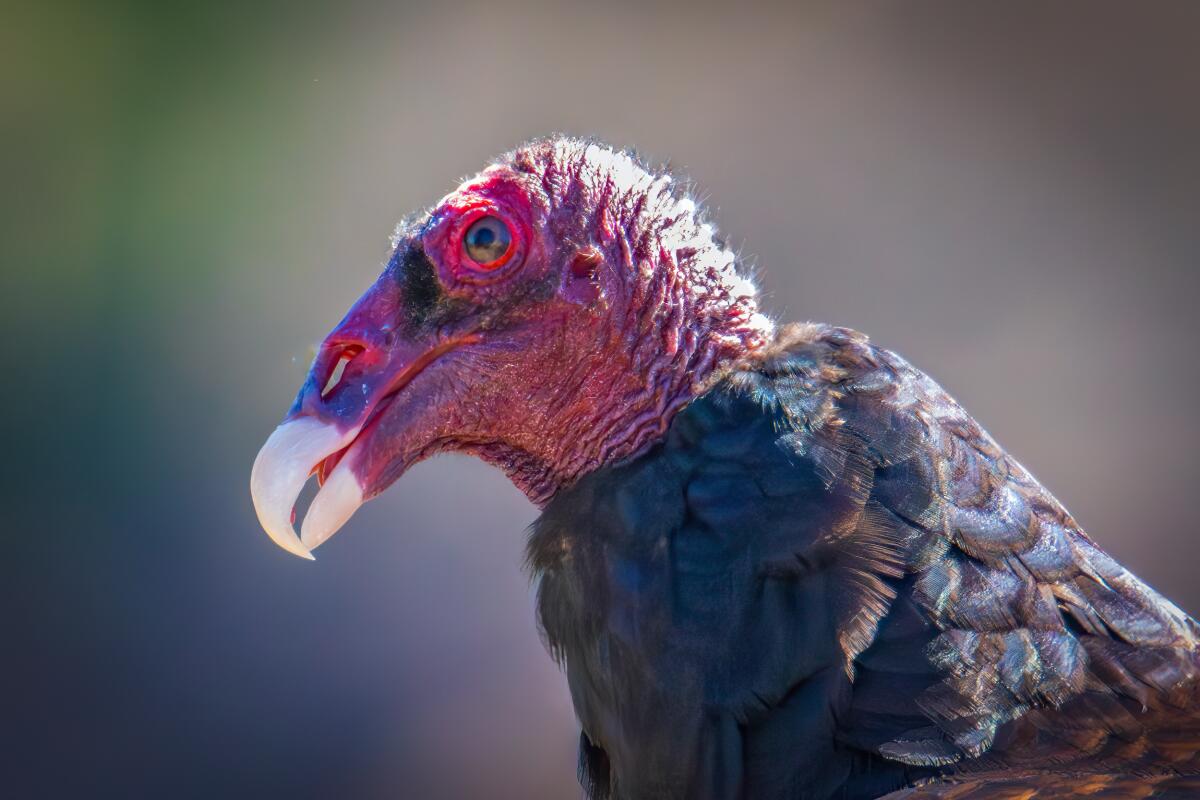
The feathers of the turkey vulture end sharply at the neck, exposing a bald, red head and white beak.
(Ernie Cowan / For The San Diego Union-Tribune)
Vultures are nature’s waste disposal team, feeding on and removing the remains of animals that have died. The bare head helps with temperature regulation but is also a likely health adaptation to help the vulture keep clean while feeding on decaying material.
Like many raptors, the vulture has keen eyesight, but also a highly developed and extraordinary sense of smell that can detect the odor of a dead animal from a mile or more away.
They have been observed dropping from 200 feet in the air to feed on a tiny, dead mouse buried under leaf cover on the forest floor.
If you get close enough, you can see a hole in the bird’s beak that allows air currents to pass through, giving the vulture its highly efficient odor-sensing ability.
While the turkey vulture tends to forage alone, other vultures will gather to feed on a large animal carcass.
They are often quite social at roosting sites, gathering in large flocks in roost trees.
On a recent drive through Black Canyon east of Ramona, I encountered a large, dead tree with nearly a dozen vultures coming and going.
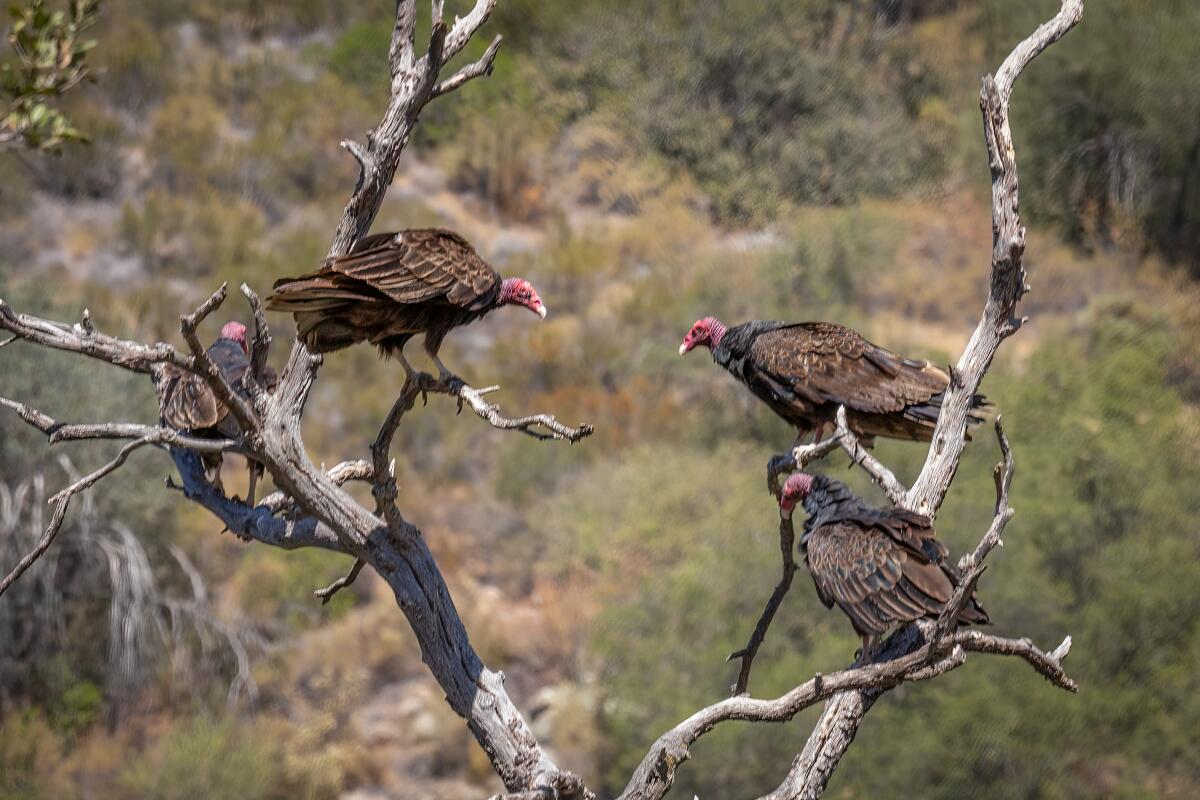
A group of turkey vultures in Black Canyon, east of Ramona.
(Ernie Cowan / For The San Diego Union-Tribune)
Their choice of remote nesting sites in steep and isolated caves and crevices has made it difficult for bird experts to accurately determine nesting numbers in San Diego County.
This time of the year, you are likely to see more vultures as winter migrants arrive from colder, northern locations, and they are generally found throughout the county with the exception of urban coastal areas.
The coffee was done now, and I had planned to go sit quietly on the patio to enjoy the warm morning sunlight.
Maybe I’ll stay inside so I don’t disturb our guest.
Might not be wise to sit still very long.
Cowan is a freelance columnist. Email ernie@packtrain.com or visit erniesoutdoors.blogspot.com.



